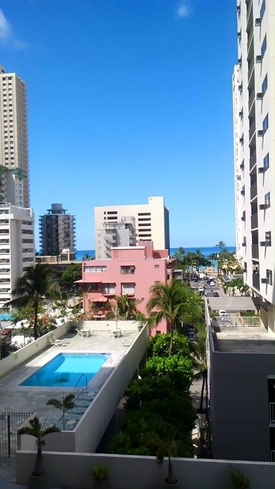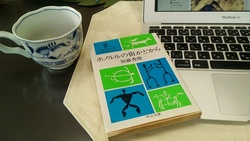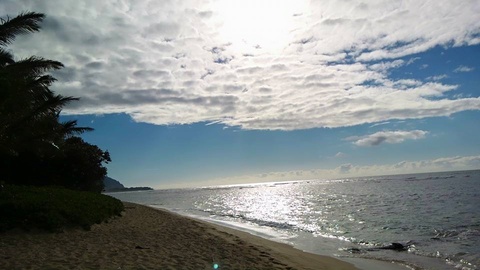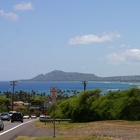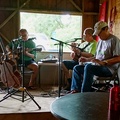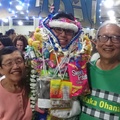I think it was the winter of 1976, when I was in the fifth grade of elementary school. Kikuchi had a radio cassette player at home, and when I used the walkie-talkie that came with it, I could hear the voice clearly even from across the rice fields. The walkie-talkie was stored inside the body of the radio cassette player. It was much cooler than the toy walkie-talkie we had at home. When I went to Fujimoto's house to play, there was a high-performance radio called Sony ICF-5800 at the head of his bed. He said it was a hand-me-down from his older brother, and it had a protruding rod antenna and several knobs and dials, and he talked with glee about how you could switch the frequency band to listen to foreign broadcasts.
The four of us, Kikuchi, Fujimoto, and Tanaka, rode our bicycles to electronics stores and collected radio catalogs from every corner. Around this time, in the mid-1970s, most home electronics manufacturers began selling high-performance radios for receiving overseas broadcasts, and the era of the BCL (Broadcasting Listening) boom was upon us.
Tanaka surprised me by buying me a high-performance radio with a cassette deck, the Sony CF-5950, but since I was preparing for my junior high school entrance exams, I was only allowed to buy a radio cassette player that could barely receive shortwave broadcasts. Tanaka's radio was an exception, but it goes without saying that standalone radios without cassette decks are more powerful than radio cassette players. Nevertheless, the radio cassette player that I selected from a large catalog made me strongly aware of "overseas" and "foreign countries."
Somehow, I managed to get into a private junior high school, and I became more and more fascinated with overseas broadcasting. During the summer vacation of my first year, I went to Akihabara in Tokyo and bought a Sony ICF-6700 shortwave radio. At school, I even started a new cultural club for this hobby. I tied a few hundred meters of antenna wire to a tree in the garden and was passionate about catching radio waves from stations all over the world. Unfortunately, the signals from the Hawaiian stations were all weak, so I couldn't enjoy the programs in the countryside of Shikoku, but the domestic station I listened to avidly every day, Japan Shortwave Broadcasting (later Radio Tampa, now Radio Nikkei), started broadcasting live from a Japanese station in Hawaii. That station is KZOO, the station I will be looking at this time.
All broadcasting stations around the world are assigned a four-letter call sign, and American broadcasting stations' call signs begin with K or W. KZOO is nicknamed K-ZOO in Hawaii.
Hawaii is a multi-ethnic society, and there are broadcasting stations in the languages of many different ethnic groups. This means that each ethnic group can enjoy programs and obtain information in their first language, their home language, or their ancestral language. This also helps people to feel and confirm their own ethnicity and identity.
Among the ethnic groups living in the United States, Japanese people are one of the most interracially diverse, and Japanese society is becoming more diverse. It is said that the rate of marriages between Japanese people in Hawaii is also decreasing. Regardless of generation or blood ties, Japanese people have a strong interest in Japanese culture, and Japanese TV and radio programs are often watched.
As of 2017, Hawaii has one Japanese TV station and one radio station. The TV station's callsign, KIKU-TV, can also be read as "Kiku Television," and is easy to remember, evoking a Japanese feel. All programs are subtitled in English, and NHK's historical dramas are broadcast at roughly the same time, as well as popular dramas from Japanese commercial broadcasters. In the past, the TBS news program "Sunday Morning" was broadcast one week behind, allowing me to keep up with what was happening in Japan when I lived there for a long time. Now, when I hear the opening melody of the program in Japan, it reminds me of the cool, humid air of Hawaiian mornings.
My favorite show from high school and college was "Soko ga Shitari" (Want to Know Where It Lies) on TBS, which is still broadcast every day and is something I look forward to whenever I'm in Japan. "Soko ga Shitari" was produced in the 1980s and 1990s, so the content is quite different from what is happening in Japan today, but whenever I meet my Japanese friends, the show usually comes up and they ask me all sorts of questions. It's so hard to correct them and explain what's happening today. When we have dinner at M-san and L-san's house, the three of us often have a great time watching this show.
As for radio stations, KOHO, which opened in 1959, was well known, but closed in 1999. KJPN, which helped ease the pain of my research during my stay in Hawaii from 2001 to 2002, also closed in 2007, and I felt very lonely when I was dispatched to Hawaii by the Ministry of Education, Culture, Sports, Science and Technology in 2008. Currently, KZOO, which has been broadcasting since 1963, is the only Japanese radio station remaining.
This time, I would like to take a look at KZOO and think about the image of Japanese people in Hawaii.
I won't go into the background of KZOO as a radio station here, as it is easy to find if you look into it. As the only Japanese radio station left in Hawaii, KZOO entertains listeners every day. It also broadcasts early morning programs by Hiroshi Ikushima and Takeo Morimoto from TBS Radio, making it convenient for finding out what's going on in Japan right away.
However, the most representative program of this station is undoubtedly the "Telephone Answering" program. It is a listener participation program that is broadcast twice a day, every weekday, from 10 am and 3:30 pm, for 30 minutes each. What are they "answering" to? They answer the questions, concerns, and problems of their listeners, and all of those things.
For example, listeners are allowed to call in and ask all sorts of questions, from everyday matters such as "We're in trouble because we've just had an overabundance of mangoes, but now we've been given more mangoes. What should we do?" and "Is there a company that speaks Japanese and can quickly fix a clogged drain?" to travel-related questions such as "How much is one dollar worth now?", "How should I get from Narita Airport to Tokyo Station when I go to Japan?" and "What size suitcase should I take on board?" to beauty and medical treatment-related questions such as "Is there a doctor who can treat my facial blemishes and pimples?" and "What is the skill and reputation of Doctor X?" Listeners are free to call in even for things that only require a little research, such as "how to make pickles."
The responses from listeners to these questions are also amazing. Simple questions are answered immediately. The problem is almost always solved on the spot. If the answer or explanation seems long, some people will say, "Call me," and give out their phone number. Their personal phone number is made public on the radio. Some even invite listeners to their homes, saying, "Come to my house. Here's my address." Their personal addresses are also made public on the radio. Many people call again when the problem is solved, and thank the announcer on the show. There are even some people who, even after the problem has been solved, try to explain their solution in their own way, only to be politely turned down by the announcer.
When I meet up with my colleagues or students at a certain location and head out in the car, I play this program for them. Without exception, they burst out laughing. Even when we arrive at our destination, no one wants to get out of the car until the program is over. People are even touched by the program, saying things like, "Do they normally ask questions like that on the radio?", "It's funny how they answer so kindly!", "It feels like they're just trying to get in on you, but I don't mind," "They're all trying so hard, it's heartwarming," "The old man who calls just to chat is so cute!", and "I was surprised at the thoughtfulness of the older woman who called to kill time for the announcer who was having trouble getting any questions."
The spirit of mutual aid and cooperation seen in this "Telephone Answering" program seems to have something in common with what was discussed in the sixth episode, "What does it mean to 'do your best'? Japanese culture and Japanese-American culture in Hawaii." As my students say, the mutual assistance here is frank and unobtrusive, and rather pleasant. As I have written in this series, I am grateful for the kindness and consideration shown to me by my Japanese-American friends in Hawaii. However, there are times when I am forced to refrain from showing such kindness due to circumstances at the time. If I explain the reason, my friends do not force their kindness on me. It is very straightforward and somewhat different from the Japanese sensibility. It is very American, but is it too much to read into it to trace it back to the mutual assistance and life wisdom of Japanese immigrants in the plantation era?
After leaving Japan, enduring long hours of work under the scorching sun in a foreign country, raising children and increasing their descendants, there is a limit to what can be achieved through individual effort alone. Unless people are frank with each other, they cannot become strong as a group. On the other hand, while they looked after and were looked after by each other, interacting with people of different ethnicities was also a part of daily life, and it was necessary to skillfully maintain a certain distance. On the other hand, it was also necessary to interact frankly across ethnic boundaries. It is likely that this multicultural and multiethnic environment and the sense of balance needed to survive there have fostered the refreshing frankness of the Japanese people of Hawaii.
I am always immersed in the comfort of being "straightforward."
© 2017 Seiji Kawasaki



